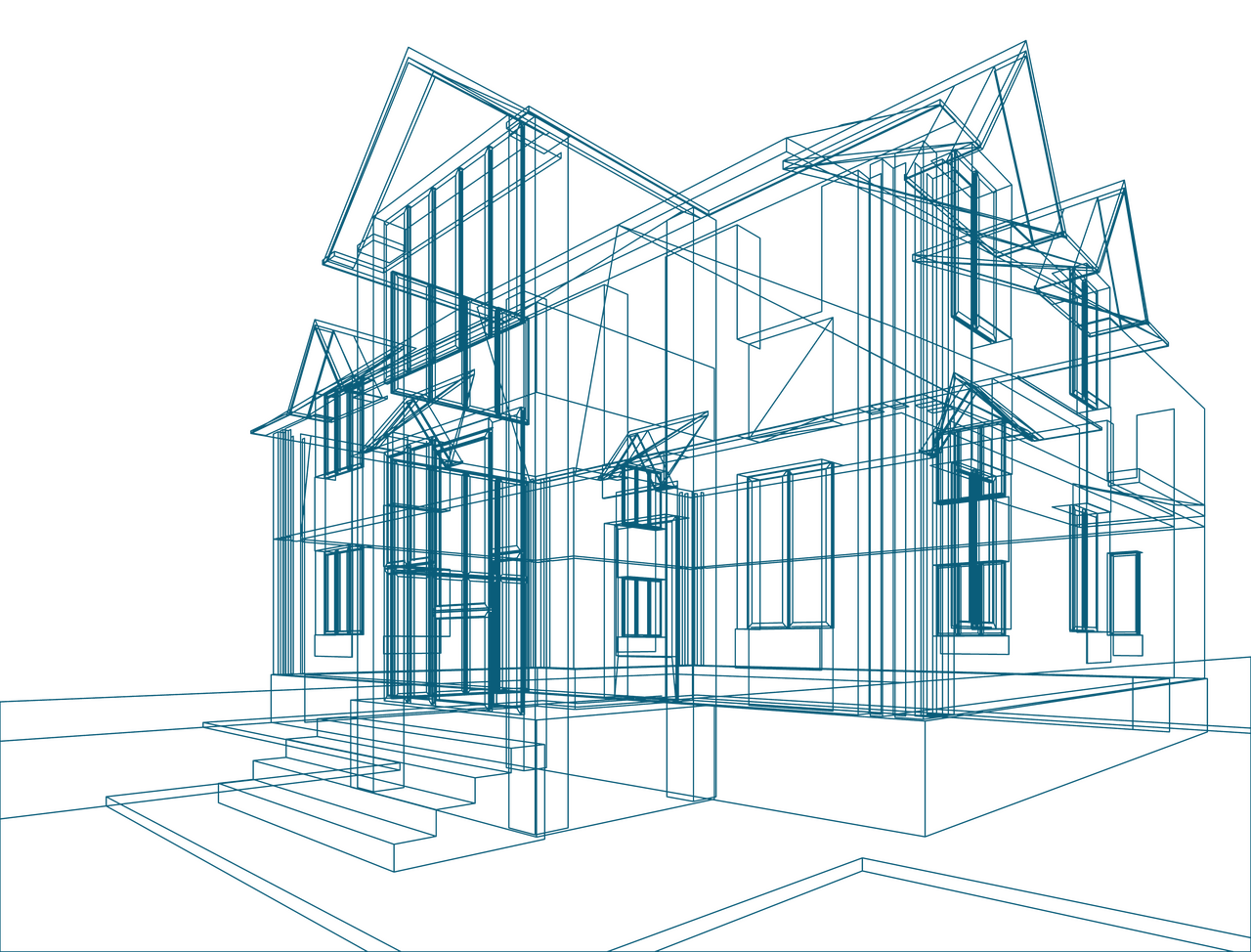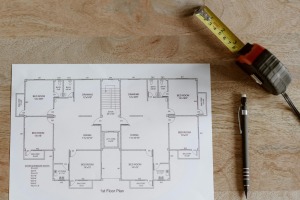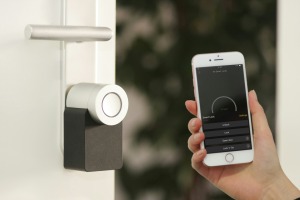


News I published 15 June 2023
Installers positive about remote working
The pressure is rising for HVAC installers and plumbers. High energy prices and a general focus on sustainability are driving a high demand for installation work. Meanwhile, there is a shortage of skilled labor as many countries are facing labor shortages that also affect the installation market. The result is a search for ways to save time by working more efficiently.
One way to achieve this is through remote work. An unintended consequence of the increasing demand for smart installation products is that more systems are being connected to the internet. This allows installers to remotely access these systems and diagnose system faults or even perform remote maintenance.
Working remotely can save installers a significant amount of travel time. But to what extent are installers actually using this possibility? When we focus our European Mechanical Installation Monitor on smart installation products, we also ask HVAC installers in six European countries whether they work remotely and what they think of it.
Only a minority of installers work remotely
When considering all countries together, approximately four out of ten installers work remotely. This means they remotely access internet-connected systems to monitor performance, diagnose issues, troubleshoot problems, and perform other maintenance tasks. However, there are significant differences between countries.
The percentage of installers working remotely with smart installation products is highest in the United Kingdom, with nearly half of the installers saying they do so. This is not surprising, as the UK also has the largest share of installers involved in smart product installation. On the other end of the spectrum of remote work, we find Poland and France, where less than a third of installers indicate working remotely.
Installers who work remotely are quite positive about it
Interestingly, among the installers who have experience working remotely, Polish installers are the most positive about it. Nine out of ten have a positive view of remote work, while the rest are neutral. However, it should be noted that in all countries, the vast majority of installers working remotely have a positive perception of it.
Many installers mention the efficiency and time-saving aspect of remote work as reasons for this positivity. In addition to saving travel time, installers also highlight the convenience of remotely monitoring or troubleshooting systems, both for themselves and their clients. Moreover, the ability for installers to respond faster to issues and resolve them more quickly through remote access is cited as a benefit of remote work.
Negative experiences reveal opportunities for manufacturers
The mentioned advantages such as efficiency, time savings, convenience, and fast service are excellent but somewhat obvious selling points for smart installation products. Manufacturers can use these to promote their smart products to both end-users and installers. However, to truly make a difference, it may be worth looking at the negative experiences, however few they may be.
Some reasons for negative experiences with remote work were related to sensor unreliability in a system, while others were related to the complexity of the systems involved. Another significant frustration is issues with internet connectivity. While manufacturers have little control over poor internet connections at job sites, they can differentiate themselves by addressing installers’ concerns and making both the installation and remote work with smart products easier.
For a more detailed overview of the experience and attitude of installers toward smart installation products, as well as their economic developments in six major European markets, we refer you to the European Mechanical Installation Monitor by USP Marketing Consultancy.

Read more


16 October 2024 I Henri Busker
The Building Blocks of Prefab: Key Materials


11 October 2024 I Dirk Hoogenboom
Rethinking European Construction: Prefab Trends


24 September 2024 I Jeroen de Gruijl
Blockchain, AI, AR and IoT – Architects’ Outlook


24 September 2024 I Dirk Hoogenboom
Future Developments in Construction Still Far Away

Fresh Insights Await
Our latest reports
Delve into the newest findings across various market segments, crafted for a cutting-edge overview. Explore our latest reports, brimming with up-to-date data, trend analyses, and in-depth examinations, all tailored to provide you with a comprehensive understanding of the current market dynamics.
Construction
Home Improvement
Installation
Special reports
Construction
Prefab H1 2024
2024 63 pages
Discover the adoption rate and benefits of prefabrication technology among European contractors in H1 2024. Understand the driving forces behind prefab usage and its impact on project efficiency and cost-saving.
6,300 Euro
Construction
Sustainability 2024
2024 72 pages
Painter Insight Monitor 2024 will focus on understanding the specific needs, preferences, and challenges faced by painters when it comes to sustainable products.
10,815 Euro
Construction
Importance of branding & branding funnels 2024
2024 62 pages
This report offers a comprehensive overview of importance of branding and branding funnels with a specific focus on European handymen. Brand behaviour is covered for each country, showing purchasing power, differences regarding quality, sustainability, online shopping, innovation-habit and private labels,
8,400 Euro
Construction
Future of construction Q2 2024
2024 82 pages
Explore the evolving future in construction sector among European architects in Q2 2024. Delve into the factors driving material preferences and the impact on construction aesthetics and sustainability.
1,850 Euro
Construction
Trends in material usage Q1 2024
2024 102 pages
Explore the evolving trends in material usage among European architects in Q1 2024. Delve into the factors driving material preferences and the impact on construction aesthetics and sustainability.
1,850 Euro
Construction
Media orientation H2 2021
2024 161 pages
Explore the media engagement patterns of contractors to optimize your marketing strategies. Dive into a pool of insights that unveils how contractors interact with different media channels.
6,300 Euro
Home Improvement
Purchase channels Q2 2024
2024 90 pages
The European Home Improvement Monitor offers valuable insights on purchase channels in the European home improvement industry, examining the evolving preferences and behaviors of consumers across traditional retail and emerging online platforms.
3,150 Euro
Home Improvement
Sustainability Q1 2024
2024 81 pages
Delve into sustainability trends in the home improvement sector in Q1 2024. Discover consumer preferences and the shift towards eco-friendly home improvement solutions.
3,150 Euro
Home Improvement
DIY versus DIFM Q4 2021
2024 113 pages
This report is a must-have if you’re in the home improvement industry. It provides a wealth of information on the behaviour of DIY and DIFM consumers, their motivations, and the factors that influence their purchasing decisions.
3,150 Euro
Home Improvement
DIY or DIFM Q4 2023
2024 70
Explore the prevailing trends between DIY and DIFM in Q4 2023. Understand consumer preferences and the factors influencing their choice between DIY and DIFM.
3,150 Euro
Home Improvement
Branding Q3 2023
2023 93 pages
This report offers an extensive overview of the home improvement industry, with a focus on branding and the most popular brands within different categories. Within this report, you will gain insights into how customers perceive home improvement brands and what motivates them to buy certain products.
3,150 Euro
Home Improvement
Purchase channels Q2 2023
2023 114 pages
The European Home Improvement Monitor offers valuable insights on purchase channels in the European home improvement industry, examining the evolving preferences and behaviors of consumers across traditional retail and emerging online platforms.
3,150 Euros
Installation
Smart & Connected Products Q2 2024
2024 120 pages
This report provides a comprehensive view of the attitudes of installers toward smart building solutions, specifically among electrical installers and their clients. In the report, you will find insights into the installers' experiences with installing smart products and the willingness of end users to invest in such solutions, as well as their motivations and pain points.
3,150 Euro
Installation
Smart and connected products Q2 2024
2024 129
This report provides a comprehensive view of the attitudes of installers toward smart building solutions, specifically among HVAC installers, plumbers and their clients. In the report, you will find insights into the installers' experiences with installing smart products and the willingness of end users to invest in such solutions, as well as their motivations and pain points.
3,150 Euro
Installation
BIM Q1 2024
2024 84 pages
The European Mechanical Installation Monitor report provides a detailed analysis of the plumbing and HVAC industry. This report specifically focuses on BIM adaptation in the industry.
2,650 Euro
Installation
Sustainability Q1 2024
2024 99 pages
The European Electrical Installation Monitor report provides a detailed analysis of the sustainable solutions in the installation industry. This report specifically focuses on sustainability aspects in the industry.
3,150 Euro
Installation
Challenges toward sustainable future Q4 2021
2024 111 pages
2,650 Euro
Installation
Purchase channels Q4 2021
2024 106 pages
Delve into the training needs within the electrical installation sector. Understand the areas requiring skill development to meet the evolving demands of the industry.
3,150 Euro
Special reports
European Sustainability Report 2024
2024 51 pages
This report provides in-depth insights based on triangulation of key market information and data as well as data from USP Marketing Consultancy’s key monitors that are carried out year in, year out. The focus of this report is on the most important stakeholders within the construction industry, namely architects, contractors, electrical and HVAC installers within The United Kingdom, The Netherlands, Belgium, Germany, Poland, France, Italy, and Spain.
3,950 Euro








